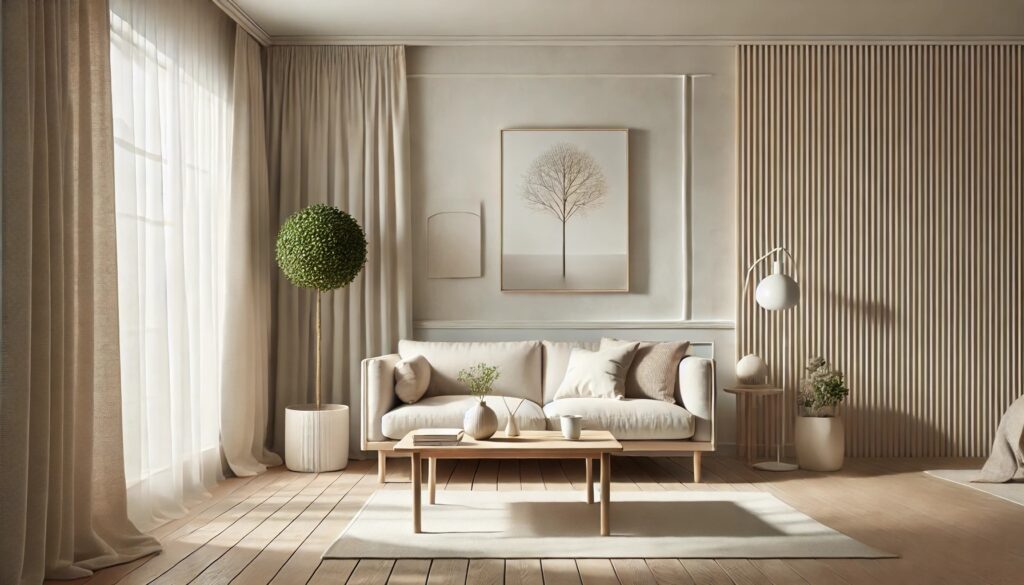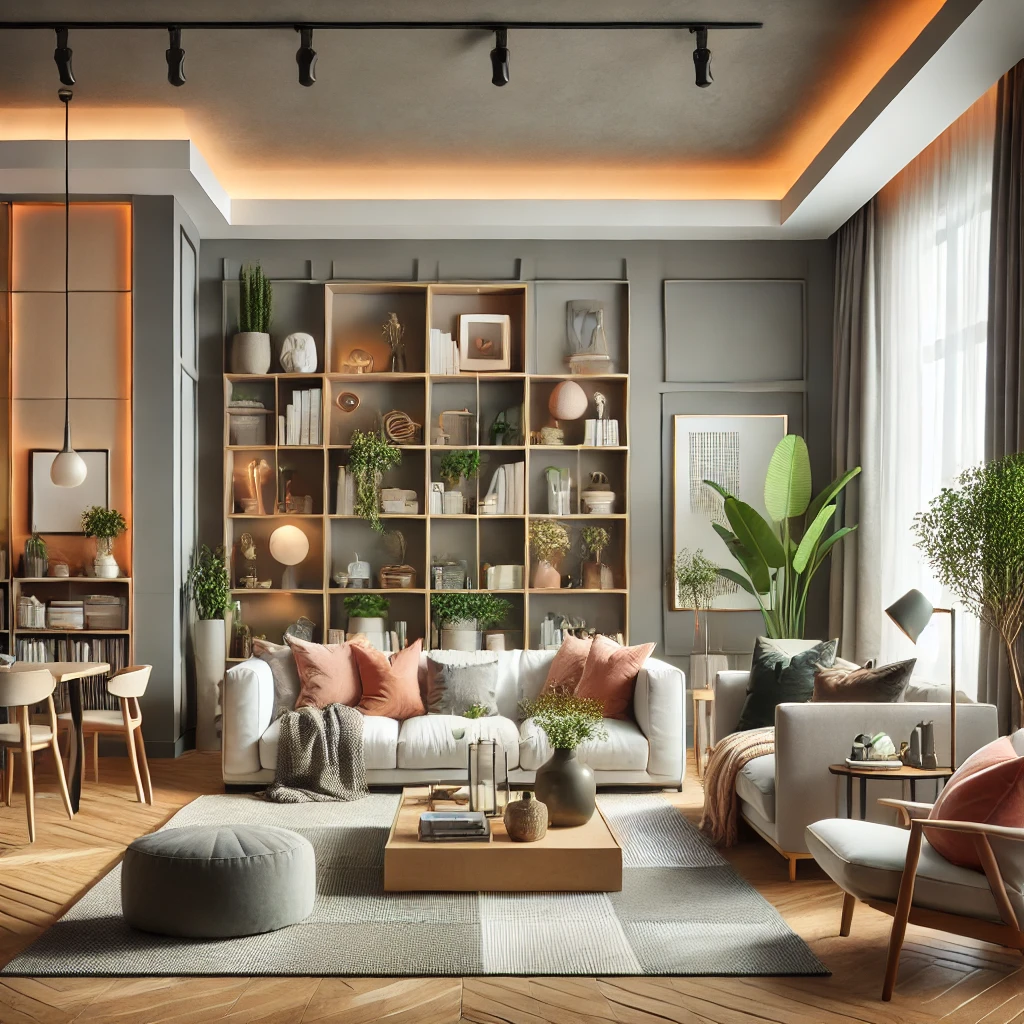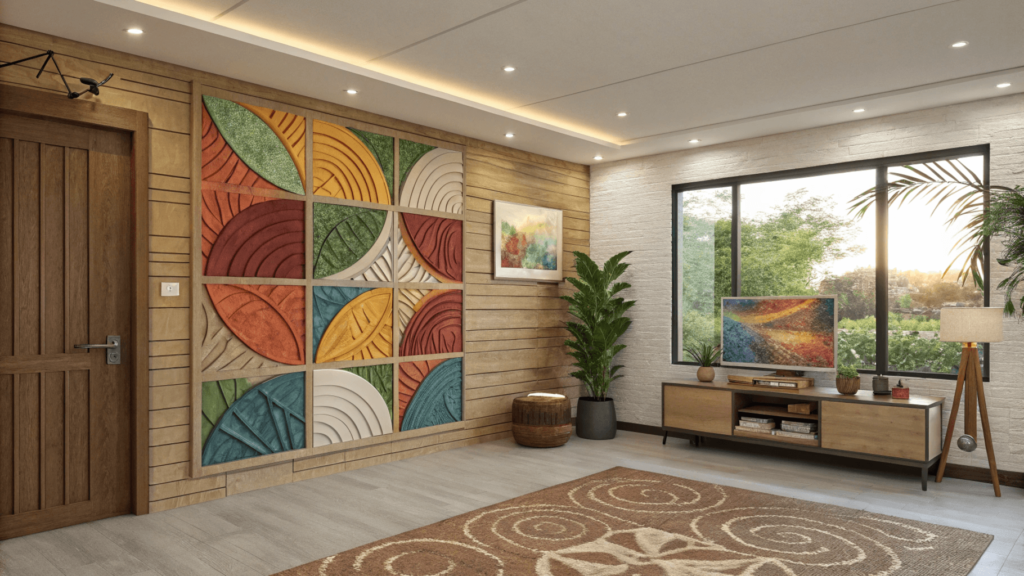When I first decided to embrace minimalist design in my 1,200-square-foot apartment, I was drowning in stuff. Sound familiar? Like many of you, I had a home full of “just in case” items and furniture that didn’t spark joy. Today, I’m sharing my journey to creating a peaceful, minimal space – and the exact steps you can take to do the same.
What You’ll Learn in This Guide:
- Simple weekend projects to start your minimalist journey
- Budget-friendly storage solutions that actually work
- The exact paint colors and materials I used
- Common mistakes to avoid (learned the hard way!)
My Minimalist Design Journey (And Why It Matters)
Remember the feeling of walking into a luxury hotel room? That sense of calm and order? That’s what minimalist design brings to your daily life. According to interior design experts, a clutter-free space can significantly reduce anxiety and improve focus.
Quick Win: Start With These 3 Steps
- Clear all flat surfaces
- Remove everything from one room
- Only return items you’ve used in the last month
The Essential Minimalist Design Toolkit
Colors That Actually Work
After testing 14 different white paints (so you don’t have to), here are the winners:
- Living Room: Benjamin Moore “White Dove”
- Kitchen: Sherwin-Williams “Alabaster”
- Bedroom: Behr “Swiss Coffee”
Smart Storage Solutions I Swear By
These aren’t just any storage ideas – these are solutions I’ve personally tested in my home:
- Under-bed drawers ($29 at IKEA)
- Floating shelves with hidden storage ($45 DIY project)
- Ottoman with compartments ($89 at Target)
Room-by-Room Transformation Guide
Living Room Revolution
According to House Beautiful, the living room sets the tone for your entire home. Here’s my exact process:
Weekend Project Checklist:
- Remove excess seating
- Create a focal point
- Hide electronics
- Install floating shelves
Bedroom Sanctuary Creation
The secret to my peaceful bedroom? Everything hidden, nothing under the bed. Here’s how:
- Capsule wardrobe system
- Hidden charging station
- Blackout curtains
- Minimal art pieces
Real Talk: Common Minimalist Mistakes
Let me share what NOT to do (learn from my fails!):
- Buying storage before decluttering
- Choosing trendy over timeless
- Rushing the process
- Keeping “maybe” items
The Budget Breakdown
You don’t need to spend a fortune. Here’s my actual budget:
- Paint and supplies: $200
- Storage solutions: $350
- New furniture: $800
- Decor items: $150
Maintenance Tips That Actually Work
Minimalist Weekly Cleaning Schedule
Check off tasks as you complete them. Each task should take 15-20 minutes.
Monday
- 15-min morning reset
- Quick bathroom wipe-down
- Declutter main living space
Tuesday
- 15-min morning reset
- Dust all surfaces
- Clean mirrors and windows
Wednesday
- 15-min morning reset
- Vacuum all floors
- Wipe kitchen surfaces
Thursday
- 15-min morning reset
- Change bed linens
- Clean bathroom thoroughly
Friday
- 15-min morning reset
- Mop hard floors
- Clean kitchen appliances
Saturday
- 15-min morning reset
- Deep clean one room
- Organize one drawer/shelf
Sunday
- 15-min morning reset
- Plan week ahead
- Refresh flowers/plants
Pro Tips:
- • Complete morning reset first thing to start day fresh
- • Set a timer for focused 15-minute cleaning sessions
- • Clean as you go to maintain minimalist spaces
- • Adjust schedule to match your lifestyle needs
My simple 15-minute daily routine:
- Morning reset
- Evening cleanup
- Weekly declutter session
- Monthly deep clean
Your Questions Answered
“Help! I have kids/pets/a partner who hates minimalism!”
Here’s how I managed with two dogs and a maximalist husband…
Living with my two golden retrievers and a husband who loves collecting vintage records taught me that minimalism isn’t one-size-fits-all. Here’s what works for us:
- Designated “collection zones” for my husband’s records
- Pet supplies hidden in attractive woven baskets
- Teaching the dogs to put toys in their own stylish storage box
- Weekly family declutter games (yes, we make it fun!)
“I’m overwhelmed – where do I actually start?”
When I first began, I stood in my living room for an hour, paralyzed by indecision. Don’t do what I did! Instead, start with this 10-minute exercise:
- Grab a timer and one empty box
- Pick ONE surface (like your coffee table)
- Remove everything from it
- Only put back what you’ve used in the last week
- Take a picture – this small win will motivate you!
“Won’t my home feel cold and empty?”
This was my biggest fear! My solution? I kept things that truly spark joy. My home still has:
- Family photos (just in coordinated frames)
- Cozy textiles (in neutral colors)
- Plants (they add life without clutter)
- Meaningful art pieces (but not covering every wall)
“How do you handle seasonal items and holiday decorations?”
Full confession: I used to have an entire storage unit for holiday decor! Now I follow the “one in, one out” rule:
- One storage bin per season
- Multi-purpose decor when possible
- Digital photos of sentimental items
- Rotating display system
“Is minimalist design expensive?”
Let me bust this myth with real numbers. My living room transformation cost:
- Paint: $45
- IKEA storage solutions: $120
- Second-hand furniture: $200
- Plants: $35 Total: $400 (not the thousands that magazines suggest!)
“How do you organize a small space?”
My first apartment was 500 square feet! Here’s what I learned:
- Vertical storage is your best friend
- Multi-purpose furniture is crucial
- Regular decluttering is non-negotiable
- Everything needs a designated home
“What about my home office setup?”
Working from home changed everything. My minimalist home office essentials:
- Hidden cable management system ($15 DIY)
- Wall-mounted monitor
- Drawer organizers for supplies
- Digital filing system (goodbye, paper!)
“How do you maintain minimalism long-term?”
Real talk: I still sometimes impulse-buy things I don’t need. But these habits help:
- One-minute rule (if it takes less than a minute, do it now)
- Monthly donation box
- “Sleep on it” purchase rule
- Regular space audits
“What about sentimental items?”
This is the toughest challenge for most people. Here’s my approach:
- Keep one meaningful item per category
- Take high-quality photos of others
- Create digital memory books
- Share items with family members who’ll use them
“How do you handle gifts and visitors?”
I had to have some awkward conversations, but now:
- Family knows to give experiences over things
- We maintain a small “guest supplies” cabinet
- I keep a donation box for unwanted gifts
- We request no-gift celebrations
Remember: Your version of minimalism doesn’t have to look like anyone else’s. It took me three years to find my sweet spot, and it’s still evolving. The goal isn’t perfection – it’s creating a space that makes your life easier and more peaceful.



